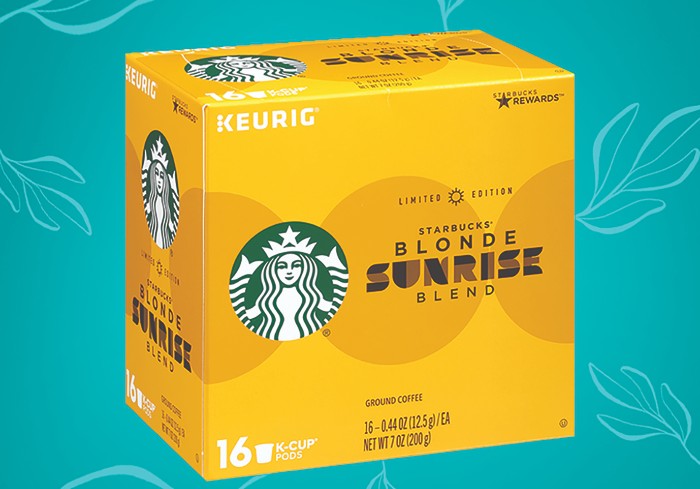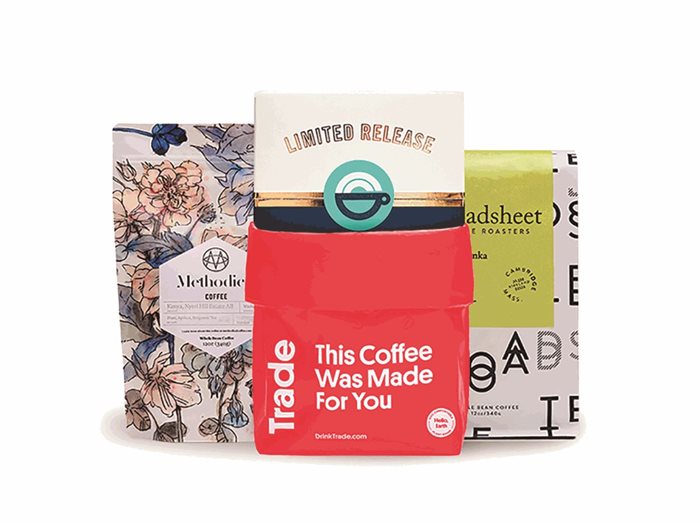As retail coffee sales soar during the pandemic, growing consumer desire to emulate the café experience at home presents a golden opportunity for out-of-home operators grappling with disruption to traditional footfall

A Nescafé product illustration from Scandinavia in the 1950s | Photo credit: Courtesy of Nestlé
At any other point in history, bicycles, firearms, Lego and coffee would probably share little in common. But in a year when coronavirus has caused global economic turmoil not seen since the Second World War, sales of all these products have surged.
In the UK, leisure retailer Halfords reported cycling goods sales raced ahead 59% in the 20 weeks to 21 August 2020. In the US, the National Shooting Sports Foundation (NSSF) said gun and ammunition sales shot up 95% and 139% respectively in the first half of 2020. In Belgium, Lego built up a 14% sales rise during the first six months of 2020.
In 2020, sales of retail packaged coffee, coffee pods and home espresso equipment, too, have soared as temporary café closures and national quarantines have confined consumers’ beloved coffee rituals to the home.
In the UK, grocery retailers sold £24m more tea and coffee in June 2020 than the same period in 2019 according to market analysts Kantar. In July 2020 Nespresso announced it would
invest $170.5m adding ten new production lines to its Romont coffee pod production facility in Switzerland to keep pace with rising global demand. In October 2020, JDE Peet’s announced it would
step up coffee pod production by 60%.

Sunrise Blend KCup Coffee Pods (2019) | Photo credit: Courtesy of Starbucks
But more than simply cannibalising coffee shop sales, the growing diversity and sophistication of at-home coffee products indicates a deeper shift in the way coffee is perceived, sold and consumed globally.
“The boom in at-home coffee consumption has its genesis long before the Covid-19 pandemic forced us to cocoon in our homes. It is a trend that has at its core the underlying foundation on which the coffee industry is built: People love their coffee – coffee is often part of a daily ritual and deeply a personal moment,” says Paul Accornero, Global CCO,
De’Longhi Group and CEO, De’Longhi Kenwood APA Ltd.
De’Longhi’s kitchen appliance business is another firm that has benefitted from increased at-home coffee consumption during the pandemic. Half-year revenues for 2020 rose 6.9% on 2019, with revenues across its Europe and Asia Pacific Americas businesses up 9.2% and 10% respectively.
“The long-term coffee at-home mega-trend is being driven by a combination of consumers’ search for the in-cup quality experience of the third-wave coupled with new state-of-the-art at-home machines that allow consumers to replicate beverages previously only available from a professional barista,” says Accornero.
The success of major café and retail coffee partnerships in recent years reflects this view. In May 2018,
Nestlé paid Starbucks $7.1bn for exclusive rights to market the coffee chain’s branded retail packaged coffee. Nestlé later credited the ‘Global Coffee Alliance’ as a major factor behind a 5.5% sales increase in its third quarter results. In the same quarter, McDonald’s and JAB Holdings-controlled Keurig Dr Pepper announced a partnership to sell McCafé-branded coffee pods and retail packaged coffee.
"The emulation of high street coffee shop beverages at home is an existing trend that has been accelerated by Covid-19"
- Phil Smith, Head of Category Insight at UCC Coffee UK & Ireland
The growing symbiosis between out-of-home brands and at-home equivalents has also been observed by Phil Smith, Head of Category Insight at
UCC Coffee UK & Ireland. Smith, who has been analysing coffee trends in the UK & Ireland for more than 16 years, reports home sales of roast & ground coffee surged 30-50% at the height of the pandemic in the UK.
“What is surprising is that sales have not tailed off as much as we thought it might. Year-to-date we are still seeing 24% growth versus the same period last year,” he says.
“The emulation of high street coffee shop beverages at home is an existing trend that has been accelerated by Covid-19. This has been driven by the fact that more people have bean-to-cup machines, which used to costs thousands of pounds but are now available for hundreds.
“There is definitely going to be a long-term impact for the roast & ground sector and I think it is going to be a positive one, with consumers switching from the instant category to the ‘real’ coffee category.”
But should coffee shops view increased at-home consumption as a threat to their businesses? Likely not, according to Smith, who believes and elevation of consumers’ coffee expectations will boost demand for premium coffee products across the coffee shop and at-home coffee markets.
“There could be a positive impact for out-of-home coffee because the UK taste palate will be trained to a better quality coffee. This should drive up quality among some cafés you see on the high street.”
 A close-up shot of a granule of Nescafé Gold Blend instant coffee | Photo credit: AJC via CC BY-SA 2.0
A close-up shot of a granule of Nescafé Gold Blend instant coffee | Photo credit: AJC via CC BY-SA 2.0
Bringing the café experience home
For café operators grappling with coronavirus disruption to traditional footfall, especially among office workers and commuters, retail packaged coffee is becoming an increasingly important sales channel. In May 2020 the UK’s largest coffee chain, Costa Coffee, announced the expansion of its packaged coffee range across Europe. Similarly, food-focused café chain Pret A Manger, has
launched branded retail coffee products in UK supermarkets and online.
Starbucks, too, has tapped into its founding roots as a premium coffee bean retailer, offering a growing range of premium and specialty coffees via the retail arm of its Reserve store format. In May 2020, 19-strong New York-based specialty café chain Joe Coffee reported a 450% increase in sales of its branded specialty instant coffee as the pandemic forced customers to stay home.
Restrictions on movement and social gatherings due to Covid-19 have also resulted in an explosion of e-commerce and digital ordering solutions among coffee shops and grocery retailers alike. This has generated enormous potential for at-home products and the opportunity to create a more coherent, tailored retail coffee offer.
“One of the biggest challenges for the roast & ground category in-store is that it can be a very complicated place to shop. Unless you are confident that you know exactly what you want, it can be a very confusing category for consumers to navigate. Online shopping gives the consumer a greater amount of time to browse, research coffee flavours, how the coffee is best brewed, and its strength, so they can make more informed decisions,” says UCC’s Smith.
"As the US coffee market shifted toward specialty coffee and in-home consumption via brewing, grocery was ill-equiped to capture the demand"
- Mike Lackman, CEO, Trade
For boutique cafés and roasters, e-commerce also offers the opportunity to reach larger segments of the market on a scale traditionally only courted by scaled coffee companies.
Trade is a US start-up that digitally connects boutique coffee shops and roasters with far wider audiences than they would be able to reach organically. Launched with the backing of global coffee behemoth JAB Holdings in April 2018, the online coffee retailer uses an algorithm to generate customised coffee subscriptions and offers over 400 coffees from more than 50 US premium and specialty roasters, including Verve Coffee Roasters, Ritual Coffee and Onyx Coffee Lab.
Since launching, the company reports it has sold more than one million bags of coffee and is forecasting the sale of another one million bags within the next six months. Indicating the long-term potential of its online business model, Trade says it has achieved a 90% customer retention rate from first order and in August 2020 completed a further $9m funding round to develop its online business.
Trade CEO Mike Lackman says his company has found success in catalysing growing demand for both convenience and premium quality, a combination he says is underserved by existing pod and single coffee serve options in the US.
“As the US coffee market shifted toward specialty coffee and in-home consumption via brewing, grocery was ill-equipped to capture the demand. Trade witnessed this opportunity and built an experience to deliver better brewing, focused on connecting people to a variety of specialty coffees while still offering convenience.”
The commercial opportunity for Trade’s partner cafés and roasters is also evident. Since joining the online platform in March 2020, North Carolina-based Methodical Coffee reports Trade subscription sales now account for around 30% of its roastery business, which had previously received around 90% of orders from wholesale hospitality clients.
"Out-of-home and at-home could be seen as two sides of the same coin"
- Paul Accornero, Global CCO, De’Longhi Group and CEO, De’Longhi Kenwood APA Ltd
North of the border, in Canada, similar developments are brewing. In August 2020, Montreal-based coffee shop, roaster and retailer Dispatch Coffee raised nearly US$1m in seed funding with the specific aim of developing its e-commerce at-home coffee business across Canada.
The funding may not seem like a hill of beans compared to the financial might of scaled international coffee brands, but the investment further demonstrates how the pandemic is influencing the business trajectories of coffee companies large and small.
“Retail was already changing pre-pandemic,” commented Dispatch Coffee founder Chrissy Durcak in a press statement announcing funding round completion. “Now demand for e-commerce and home delivery is exponential. In challenging times like these, we’re looking for ways to stay connected, safe and diversify the experience of being at home.”

Trade Partner Roasters in 2020 | Photo credit: Courtesy of Trade
A golden opportunity
While coffee has long been enjoyed in the home, the experience frequently paled in comparison to the barista-grade quality found in coffee shops. Now, growing product choice in the at-home coffee segment, coupled with the increased availability of prosumer coffee equipment, means greater convenience no longer means sacrificing quality in the cup.
As cafés begin the long process of reopening after coronavirus closures, many customers will return with a much more sophisticated home brewing playbook. For coffee shops, this presents the opportunity to place their brands at the centre of their customers’ newfound coffee rituals.
“Rather than being competitors for coffee drinkers’ favour, out-of-home and at-home could be seen as two sides of the same coin. The future opportunity will be to merge these two experiences into one,” says De’Longhi’s Accornero.
From retail packaged coffee, coffee pods, ready-to-drink, subscriptions to hot beverage delivery, there are myriad ways for coffee shops to reach customers in the comfort of their own homes. While this trend has been steadily brewing for some time, the global pandemic has undoubtedly accelerated the necessity for out-of-home coffee companies to diversify into retail coffee and digital sales channels.
As Covid-19 continues to adversely impact store footfall, for cafés and coffee shops that have worked tirelessly to elevate coffee quality in-store, there is now a real opportunity to bridge the gap between consumers’ increasing coffee quality expectations and the reality at home.
This article was first published in Issue 5 of 5THWAVE magazine
Subscribe to 5THWAVE to receive each edition in print and digitally or sign up to our newsletter and be the first to read the latest articles and updates on World Coffee Portal research
